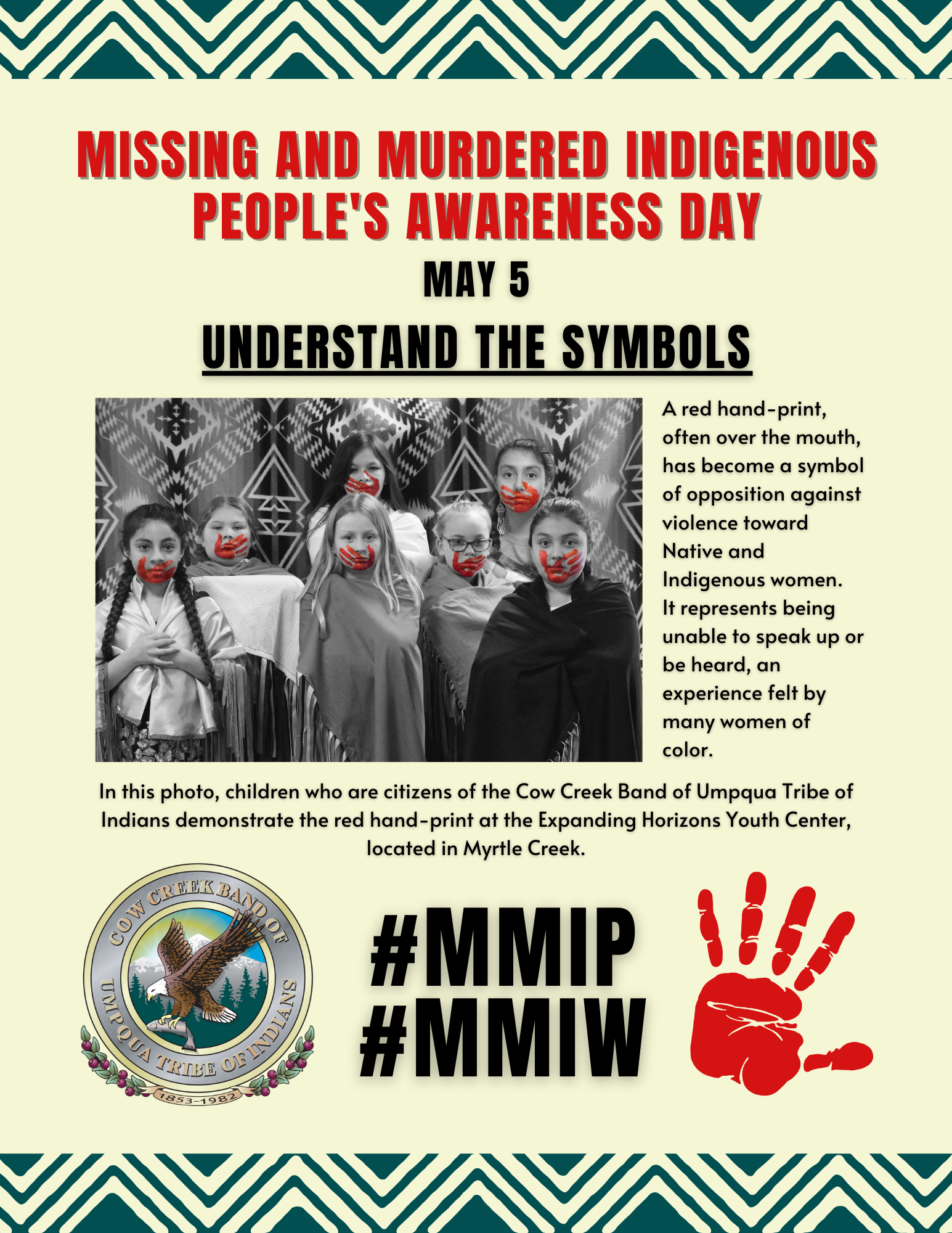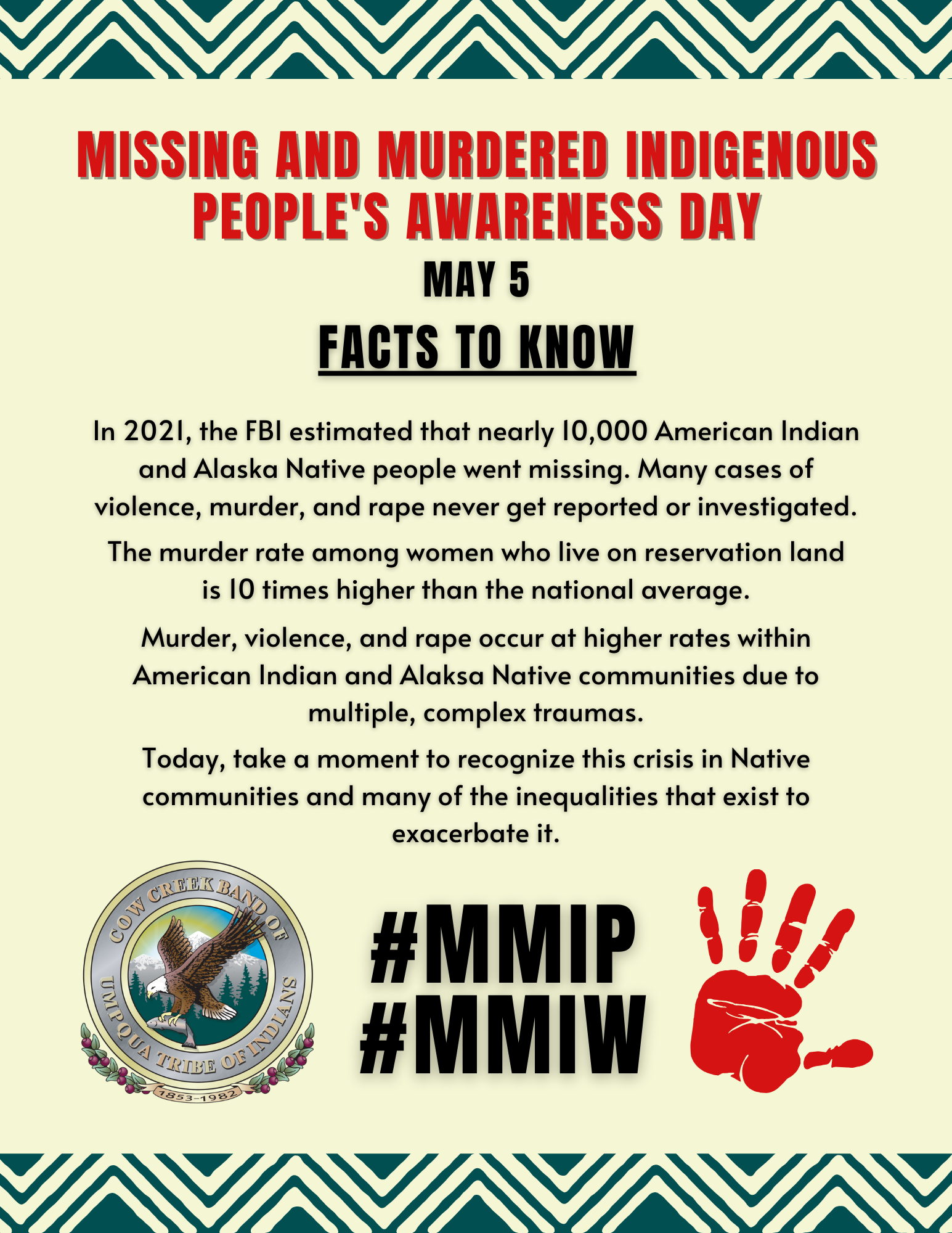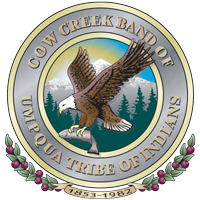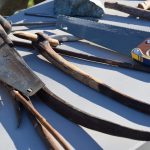MMIP Awareness Day is May 5. What do you know about the crisis?
What is the Missing and Murdered Indigenous People/Women Crisis?
For many reasons steeped in historical and generational trauma, Native and Indigenous communities in America and Canada experience higher rates of violence and violent crimes than other groups of people. Murder, assault, and sexual violence occur at high frequencies, but the crimes may not be properly investigated. As a result, some Tribal communities have loved ones go missing, but they aren’t reported to authorities. Families say their reports are not taken seriously and a missing Tribal member might be stereotyped and categorized as “they just left and never came back.” The lack of closure and feeling of despondency is devastating to Tribal communities. On social media, the topic is usually shortened to the hashtag #MMIP or #MMIW.
How bad is the problem?
Bad, though authorities acknowledge there is a lack of data (due to mistrust in law enforcement, negative stereotyping, etc.) so the full scope of the problem is difficult to pinpoint. Commonly cited statistics from the National Institute of Justice in 2016 found that four in five Native/Indigenous women have experienced violence in their lifetime, and over half of Native/Indigenous women have experienced sexual violence. The CDC cites that in 2020 both men and women who identify as American Indian/Alaska Native experienced the second highest rate of homicide compared to all other racial and ethnic groups. Rates of violence and violent crimes on Native reservation land can be as much as ten times higher than national averages.
How did this problem arise?
Native Hope, a nonprofit focused on uplifting Tribal communities, has an extensive explanation of the multi-faceted issues that contribute to the reasons behind the MMIP crisis. The complexities include, but are not limited to:
Residential Schools:
- In the 1800’s and early 1900’s, hundreds of thousands of Native American and First Nations children were removed from their homes and placed in residential schools. At residential schools, violence was a way of life, and the children who survived (many did not survive: https://www.nytimes.com/interactive/2023/08/30/us/native-american-boarding-schools.html) took home those violent practices, continuing generational trauma at the family level.
Poverty:
- There is a lack of economic resources on Tribal reservations. Many Native communities and ancestral lands are in rural areas, which undercuts wages and job opportunities. Poverty can lead to desperation and hopelessness, and thus Native people become victims of crimes.
Inadequate Access to Healthcare:
- Native Americans suffer from heart disease, diabetes, cancers, and even suicide at higher rates than other Americans. Life expectancy for Native Americans is 5.5 years less than other racial groups, according to the Indian Health Services. Poor health contributes to a number of lifestyle at-risk factors.
There are many other issues that complicate the state of missing and murdered Indigenous people, so read more on the Native Hope website: https://pages.nativehope.com/native-americans-today
What is being done about it?
There’s an increased awareness of this issue since 2021, when Secretary of the Interior Deb Haaland, a Laguna Pueblo Tribal citizen, created the Missing and Murdered Unit for Indigenous people to dig into the cases, listen to Tribal communities, and help law enforcement work together to address the problem. In November of 2023, a report from the Not Invisible Anymore Commission released a 200+-page report to Congress stating their findings and made over 300 recommendations to address the problem. Meanwhile, individuals can continue to elevate the red handprint symbol, and wear red in recognition of and during the week leading up to the National Day of Awareness for Missing and Murdered Indigenous People on May 5.
What is the significance of the red handprint for #MMIW?
Native women, who are more likely to be abducted or victimized in their lifetime than men, often call attention to the Missing and Murdered Indigenous People movement with a red handprint over their mouth. The red handprint is a symbol that represents standing with victims of violence who have been silenced, discounted and not believed when they speak out.
Why is this important for the Cow Creek Band of Umpqua Tribe of Indians?
As citizens, employees and families of a sovereign, federally recognized Tribal government, we have a unique opportunity to elevate this issue and bring awareness to it. We live and work with Tribal families, many of whom may have experienced these complex issues firsthand. This is an inclusive and supportive work environment in the Tribal community and our larger community in Southern Oregon. We believe that by talking about this issue, though uncomfortable, we can better serve our Tribal citizens and understand the challenges and problems that demand attention.
Resources:
Vice News: 20-minute news feature from 2016 about missing First Nations women in British Columbia: https://www.youtube.com/watch?v=gpzMWPQ8bpw
This piece excellently weaves together all the themes that make this crisis so complex – violence against women, residential schools, family violence, distrust in government, lack of support services and substance abuse. A note of caution here: there is an interview around the 14:20 mark with a reformed white supremacist who details why he used to target First Nation people on the streets of Vancouver. It is difficult to listen to, but necessary to gain an understanding of the inherent racism with no basis in reality that exists against people of color.
PBS NewsHour, interview from September 2021 with the Urban Indian Health Institute about conducting more robust research into missing and murdered Indigenous women: https://youtu.be/VniwyAqemlo?si=v3JsvYGS5WtQrPi6
TedxTalk: A young Cowlitz/Muckleshoot woman describes her personal connection to the MMIW discussion and how she uses her gift of running to further generate awareness: https://www.youtube.com/watch?v=X8bFL7WC4iE







